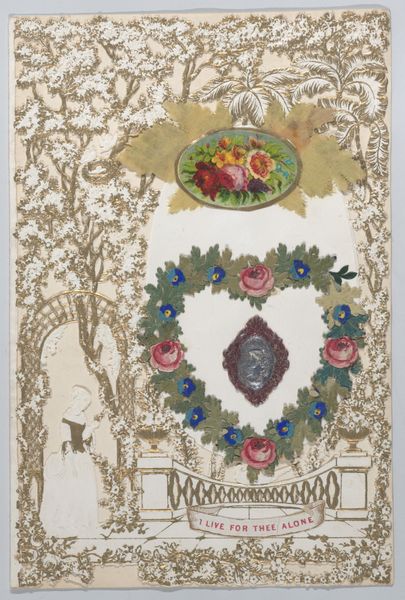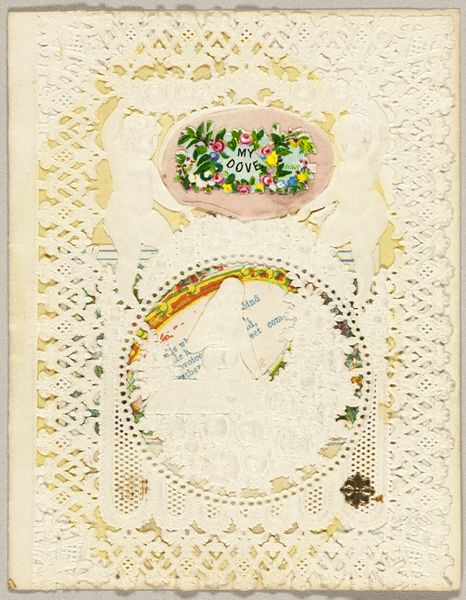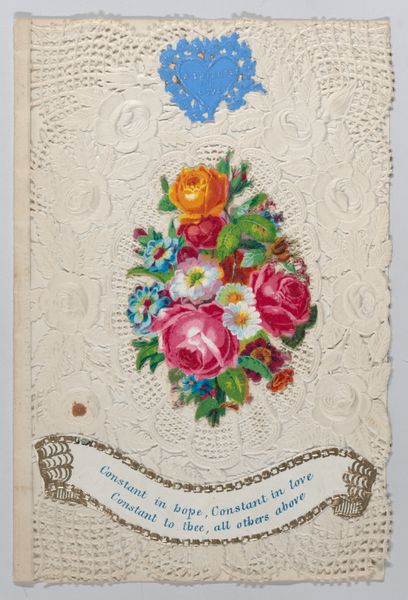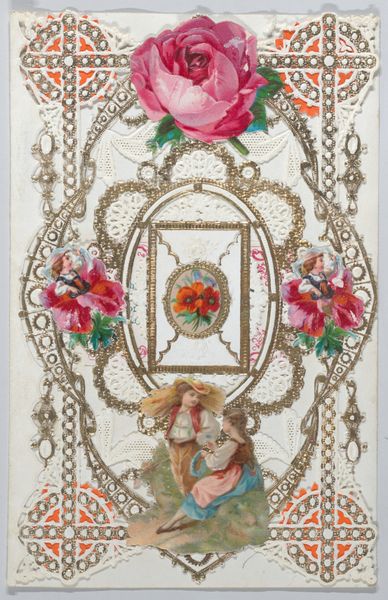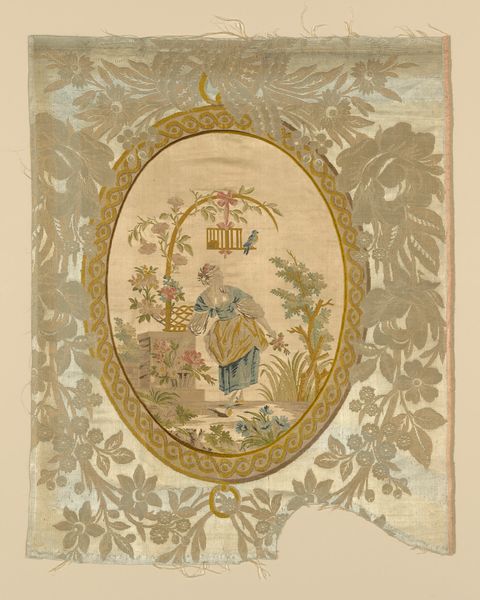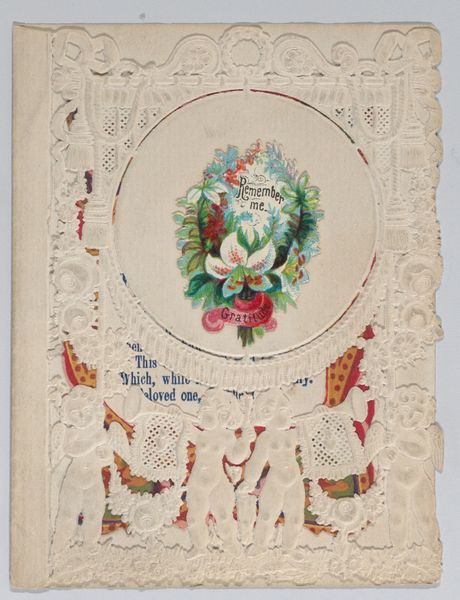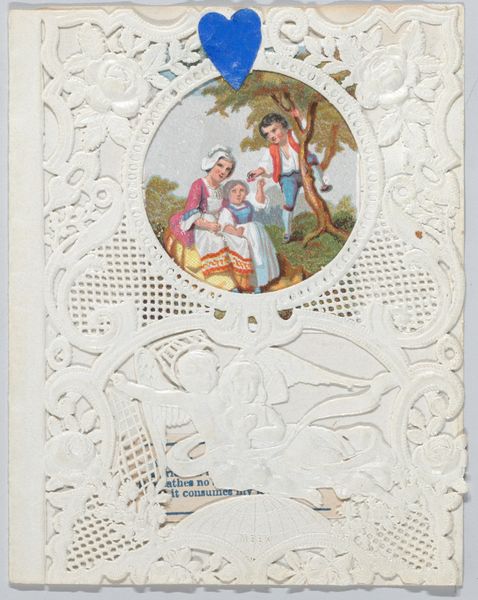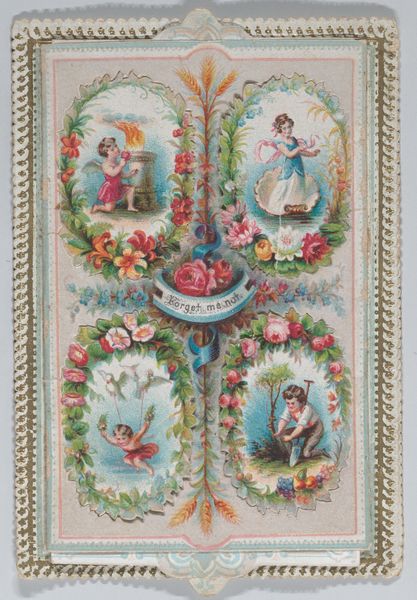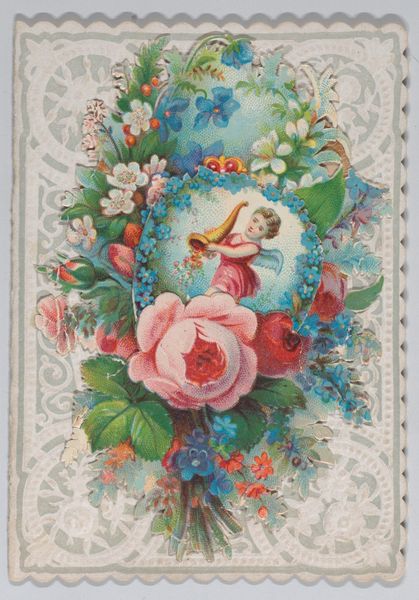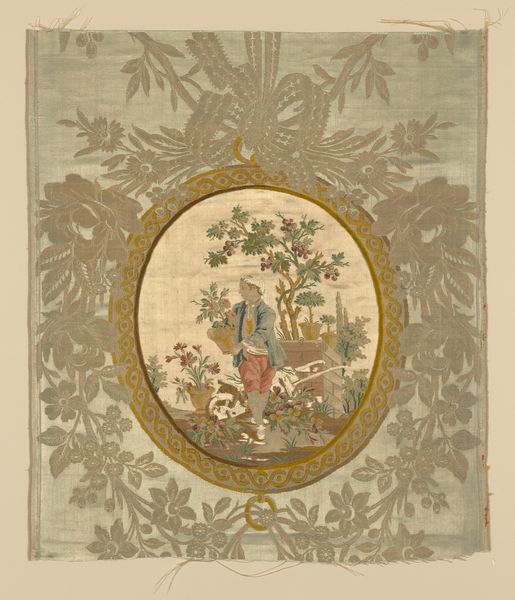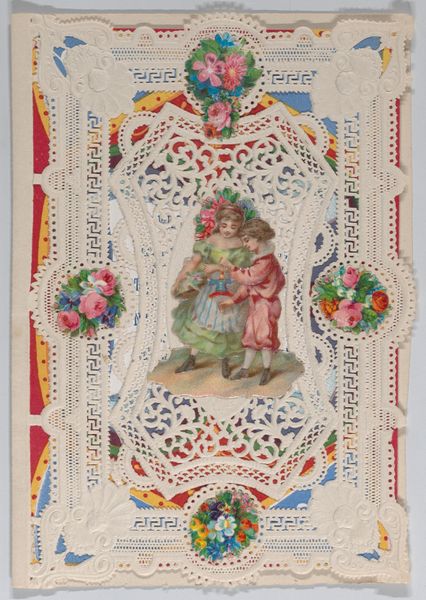
Dimensions: Width: 3 1/8 in. (7.9 cm) Length: 4 13/16 in. (12.3 cm)
Copyright: Public Domain
Curator: Looking at "Valentine," made anonymously sometime between 1850 and 1860, I'm immediately struck by the opulence of the decorative art and how skillfully the colored pencil drawing is integrated. Editor: It evokes a sense of fantasy, almost escapism. There's a tension between the delicate imagery of a fairy in a carriage and the rather forceful imperative written at the top: "Hark! Cupid calls, let us obey." It almost feels…coercive, given the saccharine presentation. Curator: The making of such a card during the mid-19th century reveals much about the burgeoning industrial processes allowing for mass production. What once might have been painstaking individual labor became streamlined; prints layered with meticulously crafted embellishments offered a consumer-friendly fantasy. Editor: Right, this card participates in Victorian notions of romance, but I see it reflecting wider power dynamics. Consider who the 'Cupid' is in this context – is it about the agency of romantic love, or social expectation? The mass-produced element is fascinating, though. Did this ease access across socioeconomic lines, or did it mainly serve middle-class sensibilities? Curator: It suggests both, perhaps. On one hand, wider access, enabling a democratization of sentiment. But, the materials used – embossed paper, metallic inks, combined with labor-intensive techniques like die-cutting and assemblage indicate a dedication to high-end consumerism and conspicuous expression, and likely would have represented a luxury available primarily to the middle and upper classes. Editor: The decorative art styling certainly contributes to the object's aspirational quality, in tension with what one might consider "sincere" emotions, so were these cards also performative declarations? It's also worth questioning what "enjoy life ere it rolls away" meant in an era of constrained social mobility and persistent gender inequality, too. Curator: It serves as a powerful reminder of the intersection between artistry, the social values of the time, and the often obscured hands involved in producing items like this. I am always eager to uncover this complex relationship within art history, connecting material expression with wider implications for consumers and makers alike. Editor: For me, it highlights how visual culture shapes and is shaped by complex and sometimes conflicting ideals of the era. A lovely object, indeed.
Comments
No comments
Be the first to comment and join the conversation on the ultimate creative platform.
